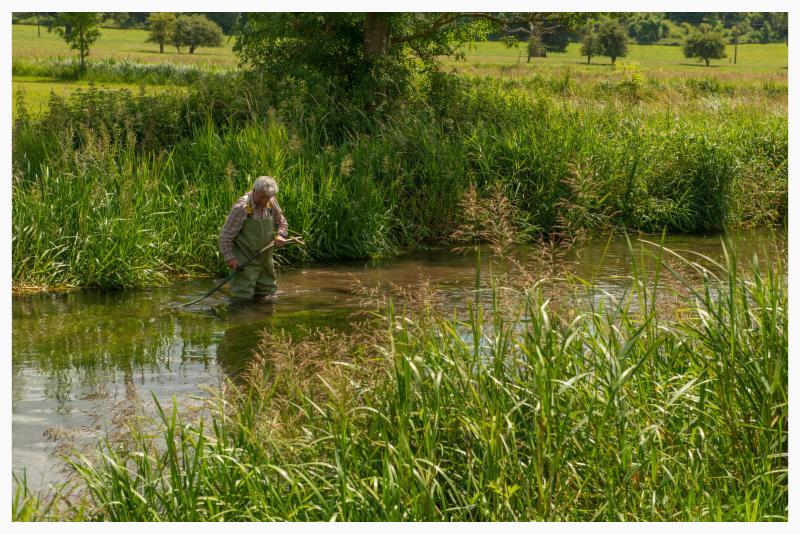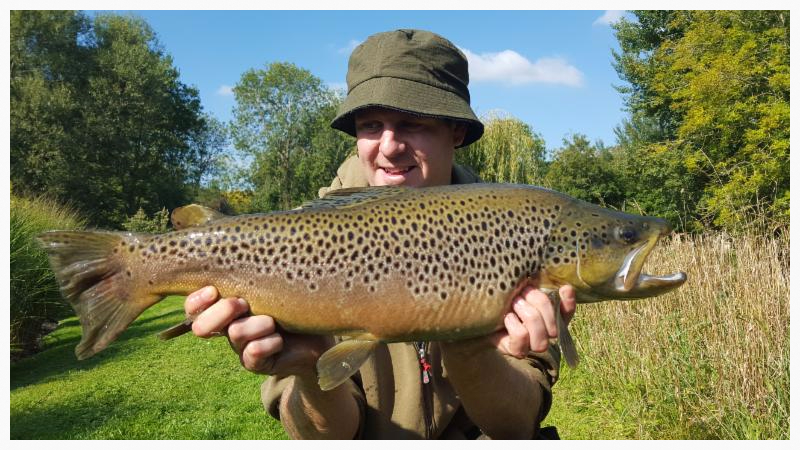By my reckoning we only have, give or take the whims of Mother Nature, 137 days before the Mayfly hatch starts. I think it is too much to describe that as the defining moment in any particular season, but it never fails to excite me.
I suspect we all have our own particular moments that are hard-wired into our memory for all sorts of reason - a particular fish, a memorable half hour or just simply the cadence of the day. Fishing is a great way of suspending reality and we make our memories around that.
But for all that the arrival of the Mayfly will always be a milestone in my calendar. A marker that shows nature has gone full circle and that, at least in the confines of a chalkstream valley, all is well with the world. Anyway enough musings of what is to come.
Here is my look back at 2015 in photos, with one video. I hope it is enough solace so you may keep the faith until the first cast of the season.
JANUARY
Paul Colley, a professional underwater photographer, embarked on his trout project in Stockbridge with his special waterproof rig set up on the High Street stream. At first the ducks were a menace but when this photo went viral he learnt to love them.

FEBRUARY
Probably my last excuse to use this photo of Jon Hall, river keeper, on the Broadlands Estate with this monster 34lb female pike caught on a fly.

MARCH
When age overtakes you our guide and ace fly tyer Alan Middleton shows off the best device for the mastery of size 22 patterns.

APRIL
My good friend from Denmark Bo Hermansen visits the chalkstreams every year putting us locals to shame with his skill and expertise - few trout or grayling are safe when he prowls the riverbank. He is a pretty mean photographer as well, here capturing the menace of the Hawthorn fly eyes.

MAY
Once a year I take a little detour up the Avon valley north of Amesbury to visit the spot where Frank Sawyer's ashes were scattered over the River Avon. He has been my greatest influence and this year I discovered he designed the lake here at Nether Wallop dug in 1968 (see December photo). As he would have said, 'no wonder it works so darned well'.

JUNE
June 24th saw the 150th anniversary of the birth of Harry Plunket Greene an Irish baritone who was the Pavorotti of his day. An accomplished fly fishermen, his book Where The Bright Waters Meet, is as a good read today as it was when published in 1924, telling of his blissful seasons fishing at the confluence of the River Test and Bourne.

JULY
A photo shoot with a kind friend on the River Meon at the almost exact spot I caught my first ever trout some four decades or more ago.

AUGUST
It looks the perfect bucolic way of life but believe you me weed cutting (pictured here at the River Test on the Middleton Estate) is both skillful and back breaking.

SEPTEMBER
If you ever wondered what a river keeper does at lunchtime, well wonder no more. Jonny Walker, who looks after Bullington Manor, Dunbridge and Nether Wallop Mill, plucked this monster trout out of Wallop Brook here at Nether Wallop Mill. Got to be six pounds or more .

OCTOBER
A new generation, the pupils of Princes Mead School in Winchester, get the fly fishing bug not to mention a few fish here at Nether Wallop Mill.

NOVEMBER
I said to my guides let us celebrate the end of the season with a day together. Choose what you like: drinking, food, gambling ..... it's on me. Yes, you've guessed it they chose fishing. This is the story of our day in a three minute video. My thanks to Matt Dunkinson for doing a great job behind the camera and Wherwell Priory for letting us loose on trout who thought they were safe for another year. In truth they mostly were!
This is my screensaver for now - pictorial proof that the depths of winter will pass and summer will return.

All the best for 2016.






 All that said from my various perambulations around the rivers I'd say I don't see as many Erinaceus europaeus as I did. Believe it or not, despite appearances, hedgehogs are really quite good swimmers. Living beside rivers is a favoured haunt with worms and insects aplenty plus, naturally enough, fresh water. They don't seem to relish swimming as a pastime but they will happily cross a fairly sizeable stream when need be.
All that said from my various perambulations around the rivers I'd say I don't see as many Erinaceus europaeus as I did. Believe it or not, despite appearances, hedgehogs are really quite good swimmers. Living beside rivers is a favoured haunt with worms and insects aplenty plus, naturally enough, fresh water. They don't seem to relish swimming as a pastime but they will happily cross a fairly sizeable stream when need be.

 Today of course we feel differently; rivers are being changed to create a diverse habitat both in and along the river, with great emphasis on work that encourages a self-sustaining wild trout population plus spawning areas for salmon.
Today of course we feel differently; rivers are being changed to create a diverse habitat both in and along the river, with great emphasis on work that encourages a self-sustaining wild trout population plus spawning areas for salmon.  Yes, you have probably guessed that what Heb and the team are essentially doing is putting back what was dredged out all those years ago. It is a fairly common sight along the chalkstreams these days. ARK (Action for the River Kennet) recently completed a similar project in Berkshire with almost twice that amount of gravel, though shockingly they were making good dredging done as recently as the 1970's.
Yes, you have probably guessed that what Heb and the team are essentially doing is putting back what was dredged out all those years ago. It is a fairly common sight along the chalkstreams these days. ARK (Action for the River Kennet) recently completed a similar project in Berkshire with almost twice that amount of gravel, though shockingly they were making good dredging done as recently as the 1970's. 


 This has not gone unnoticed. ICES, the International Council for the Exploration of the Seas, flagged this up during the summer and the EU acted yesterday with a complete ban on all sea bass fishing January to June, with severe restrictions for the remainder of the year.
This has not gone unnoticed. ICES, the International Council for the Exploration of the Seas, flagged this up during the summer and the EU acted yesterday with a complete ban on all sea bass fishing January to June, with severe restrictions for the remainder of the year. 






